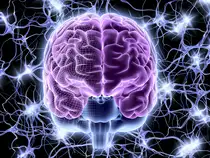The overall survival of a GBM patient post diagnosis is less than two years, medical scientists have been exploring therapeutic approaches. (Representative image)
WASHINGTON: A team of researchers at the University of Massachusetts Medical School, led by an Indian neuroscientist, has developed a non-invasive gene therapy to treat brain tumour.
Currently, treatment for brain tumour or Gliobastoma (GBM) involves surgery, followed by radiation and chemotherapy with temozolomide.
Still, complete surgical removal of tumour is nearly impossible, as these cells are also radio and chemotherapy resistant.
Currently, treatment for brain tumour or Gliobastoma (GBM) involves surgery, followed by radiation and chemotherapy with temozolomide.
Still, complete surgical removal of tumour is nearly impossible, as these cells are also radio and chemotherapy resistant.
Thus, tumour recurs in a few months after surgery and finally causes death. Even with the best of treatment, only 3% patients survive up to five years.
One of the major difficulties to treat glioblastoma is the tumour cells are highly migratory and they travel long distances within the brain as single cell infiltrates and invades within other tissues.
These single cell infiltrations are difficult to detect in the MRI scan and also almost indistinguishable from healthy t ..
One of the major difficulties to treat glioblastoma is the tumour cells are highly migratory and they travel long distances within the brain as single cell infiltrates and invades within other tissues.
These single cell infiltrations are difficult to detect in the MRI scan and also almost indistinguishable from healthy t ..

No comments:
Post a Comment
Note: only a member of this blog may post a comment.